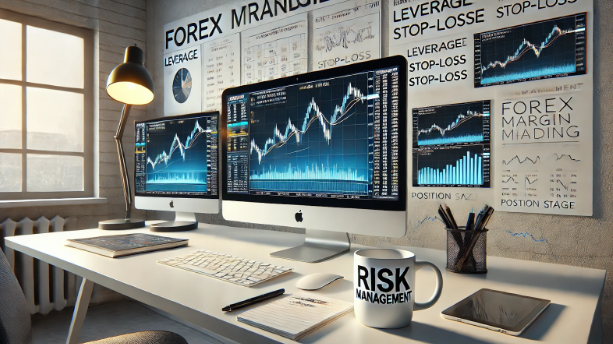Forex Margin Trading for Beginners: Unlock High Profits with Smart Risk Management
Forex margin trading is a unique and exciting way to trade in the world’s largest financial market—the foreign exchange (Forex) market. It allows investors to trade currencies without needing to put up the full value of the trade upfront. Instead, they use a portion of their capital, known as margin, to control larger positions in the market.
So, why is Forex margin trading so attractive to investors? For starters, it provides the opportunity to leverage small amounts of capital to control much larger trades. This can amplify profits when things go right. For example, a small market move in your favor can lead to significant returns on a modest initial investment.
However, with great power comes great responsibility. While margin trading offers the chance for high rewards, it also carries high risks. If the market moves against your position, losses can quickly exceed your initial margin deposit, making it possible to lose more than your initial investment.
In other words, while Forex margin trading offers tremendous potential for profit, it is essential to understand both the rewards and risks before diving in. Let’s break down how this process works.
How Forex Margin Trading Works
At the core of Forex margin trading is the concept of leverage. Leverage allows traders to control a large position in the market using only a small portion of their capital. For instance, with a leverage ratio of 1:100, you can control a $100,000 position with just $1,000 of your own money.
In Forex trading, margin is the amount of money required to open and maintain a position. It’s essentially a deposit or "good faith" amount that guarantees your ability to cover any potential losses. Margin is expressed as a percentage of the total trade size.
For example, if you want to trade a position worth $100,000 with a margin requirement of 1%, you’ll need to deposit $1,000 in your margin account to open the trade. This small deposit allows you to take on larger positions in the market and potentially magnify both your gains and losses.
The Risks of Forex Margin Trading
While leverage can amplify your potential gains, it also magnifies your risks. Understanding these risks is crucial to becoming a successful Forex trader.
The same leverage that enables traders to earn high returns can also cause significant losses. With high leverage, a small adverse price movement can result in a large loss, quickly eating into your margin deposit. This is especially dangerous when using high leverage ratios (e.g., 1:100 or 1:200).
In this scenario, a 50-pip move against your position would result in a $500 loss, which is a 50% loss of your margin. Since you only deposited $1,000, you would lose half of your account value in a relatively small move. This highlights the importance of using appropriate leverage and managing risk carefully.
Managing Risks in Forex Margin Trading
While leverage provides great opportunities for higher returns, it also magnifies the risks. Proper risk management is essential for protecting your capital and avoiding significant losses. Here are a few strategies that can help mitigate these risks.
A stop-loss order is a risk management tool that automatically closes your position when the price reaches a certain level. This helps traders limit their losses and prevent emotional decision-making during a trade. By setting a stop-loss, you can protect yourself from larger-than-expected losses.
For example, if you are trading EUR/USD and the price moves against your position by 50 pips, your stop-loss would trigger and close the trade, minimizing the damage. This is particularly useful for volatile market conditions where prices can swing dramatically in a short amount of time.
Conclusion
Forex margin trading offers incredible potential for profit, thanks to the use of leverage and liquidity. The ability to control large positions with relatively small amounts of capital opens up the possibility for significant returns, especially in volatile market conditions. However, this potential for profit comes with substantial risks, particularly in the form of market volatility and leverage-induced losses.
Before diving into Forex margin trading, it’s crucial to understand both the rewards and the risks associated with it. If you have the ability to manage risks effectively through stop-loss orders, position sizing, and proper leverage, then Forex trading can become a profitable venture. But if you’re not prepared to handle volatility and high-risk scenarios, margin trading may not be the right choice for you.
For more info:-

.png)
Comments
Post a Comment